Incredible Facts On The Huygens Titan Landing Probe!
First Deep Space Landing
The Huygens space probe was part of the Cassini-Huygens spacecraft that was launched to study Saturn and its moons in 1997. Huygens, built by the European Space Agency (ESA), deployed from Cassini and landed successfully on Saturn's moon Titan in 2005. The Huygens probe performed the first landing on a moon, other than Earth's, and the most distant landing ever made.
Fast Summary Facts About The Huygens Lander
- Type: Lander
- Destination: Saturn’s Moon Titan
- Mission Status: Complete
- Launch Location: Cape Canaveral, Florida
- Launch Date: October 15th 1997
- Separation Date: December 25th 2004
- Landed On Titan: January 14th 2005
- Mission Duration: 7 ¼ Year Cruise, 4 Hours Descent/Surface
Cool Fun Facts All About ESA’s Huygens Probe!
- The name ‘Huygens’ was given to the probe after the Dutch astronomer Christiaan Huygens, who in the year 1655 discovered Saturn's largest moon Titan.
- The Huygens probe was designed to perform an in-depth study of the clouds, atmosphere, and surface of Titan. It was also designed to float in case the probe landed on a lake or sea!
- The probe carried six scientific instruments such as a camera, atmospheric sensors, gas analyzer and a sensor to determine the surface conditions.
- The Huygens probe weighed 318 kilograms (700 lb) and was launched (while attached to the Cassini spacecraft) aboard a Titan IV rocket! How appropriate!
- The lander probe is quite small measuring 1.3 m (4.3 feet) across with the heat shield containing the probe measuring 2.7 m (9 ft) wide.
- Once at Saturn, the Huygens probe separated from the Cassini orbiter and started its cruise to Titan 22 days before reaching Saturn’s largest moon.
- Huygens encountered Titan’s atmosphere at an altitude of 1270 km, decelerating from 18,000 to 1,400 km/h in only 3 minutes before releasing a series of parachutes to gently drift down to the surface!
- It took the probe 2 hours and 27 minutes to descend through the atmosphere of Titan; transmitting data to the Cassini orbiter (which relayed it back to Earth) the entire time.
- The clever little probe even made a video of its descent which you can watch here thanks to JPL. Here’s another great video of the descent with scientific data displayed as it approached the surface! You need to check these out as they’re crazy cool!
- When Huygens finally landed, it became the first space probe to land on Titan, on a moon other than Earth’s Moon and remains the most distant landing from Earth.
- Images taken by the probe on the surface showed a flat plain resembling a dried riverbed covered in rounded pebbles likely made of water-ice (instead of stone) surrounded by darker fine-grained material which could be a hydrocarbon sand!
- Huygens recorded that the midday brightness on Titan is quite dark, about the same as ten minutes after sunset on Earth due to the thick orange haze!
- The probe survived 72 minutes on the surface before its batteries went flat.
- ESA spent about USD $500 million to build the probe and on the instruments aboard.
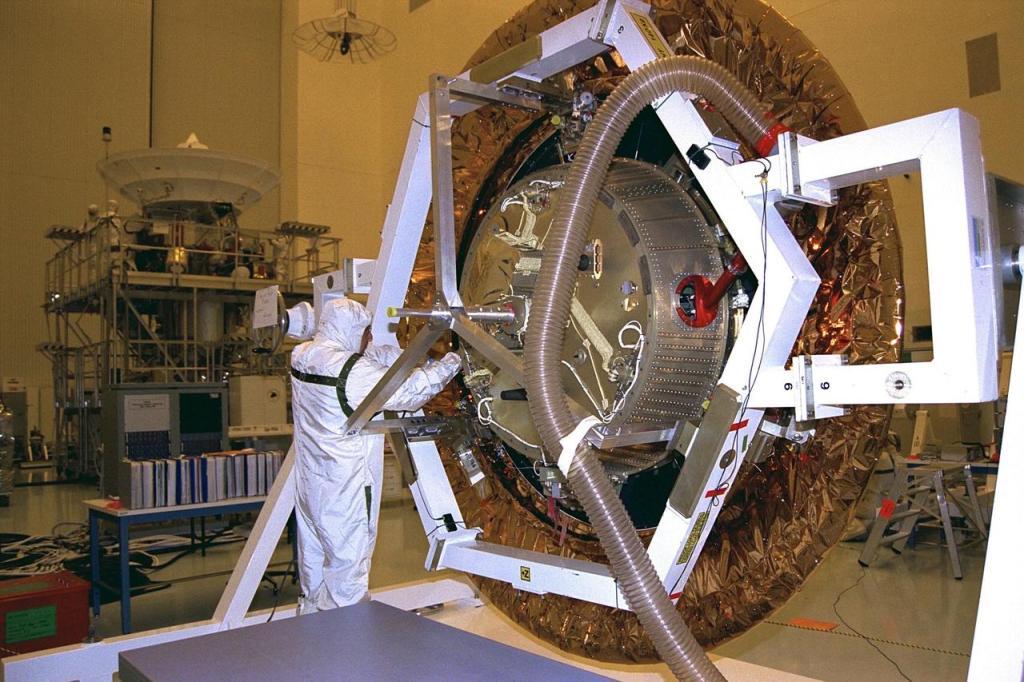
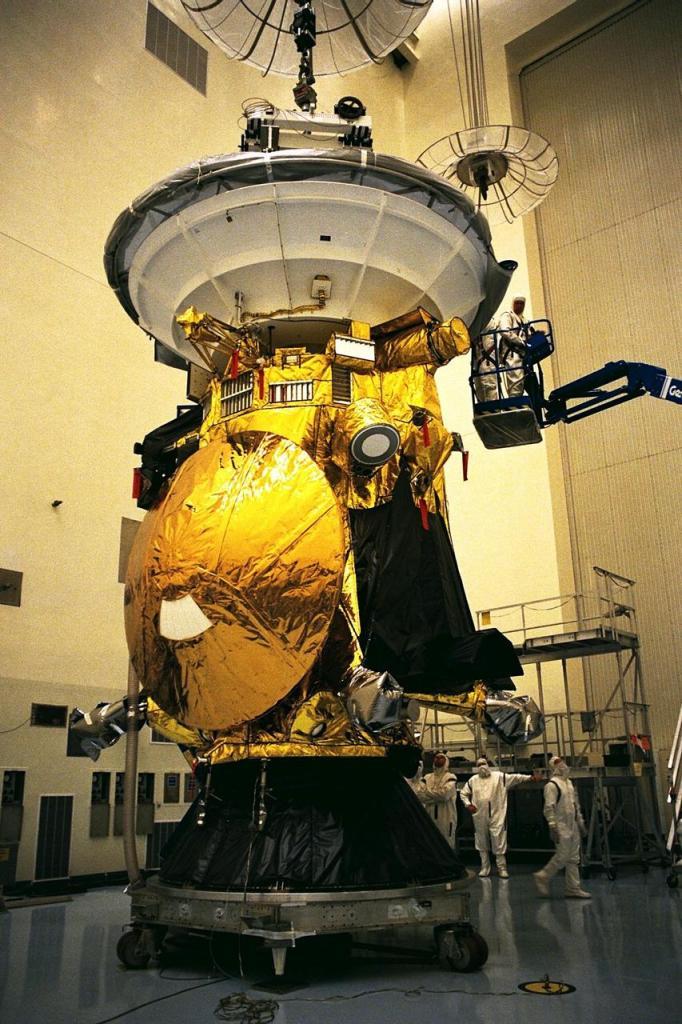
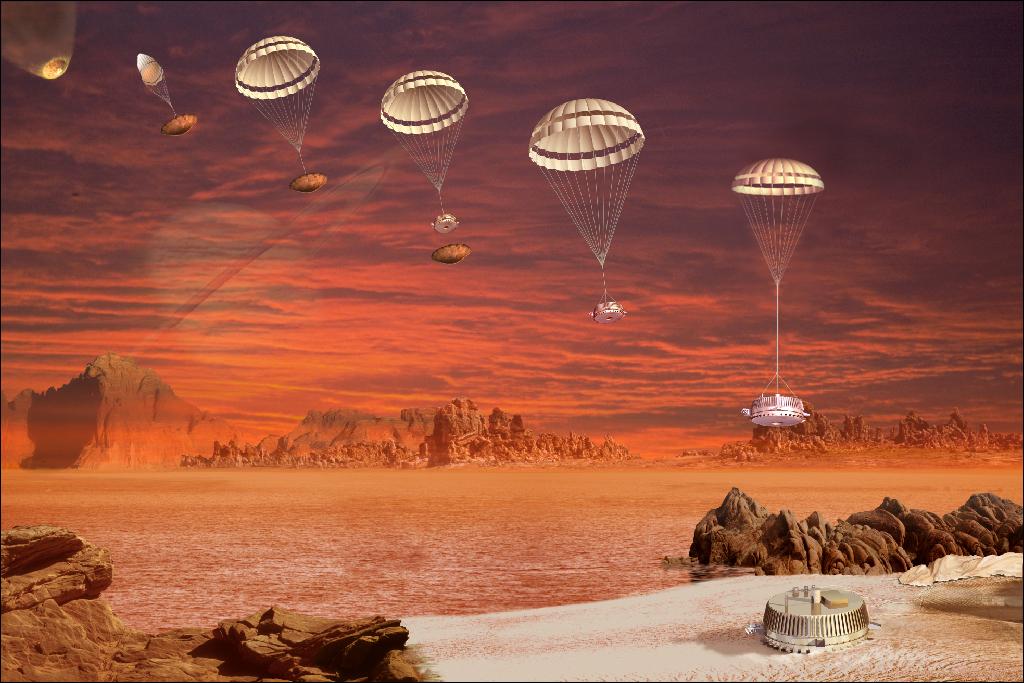
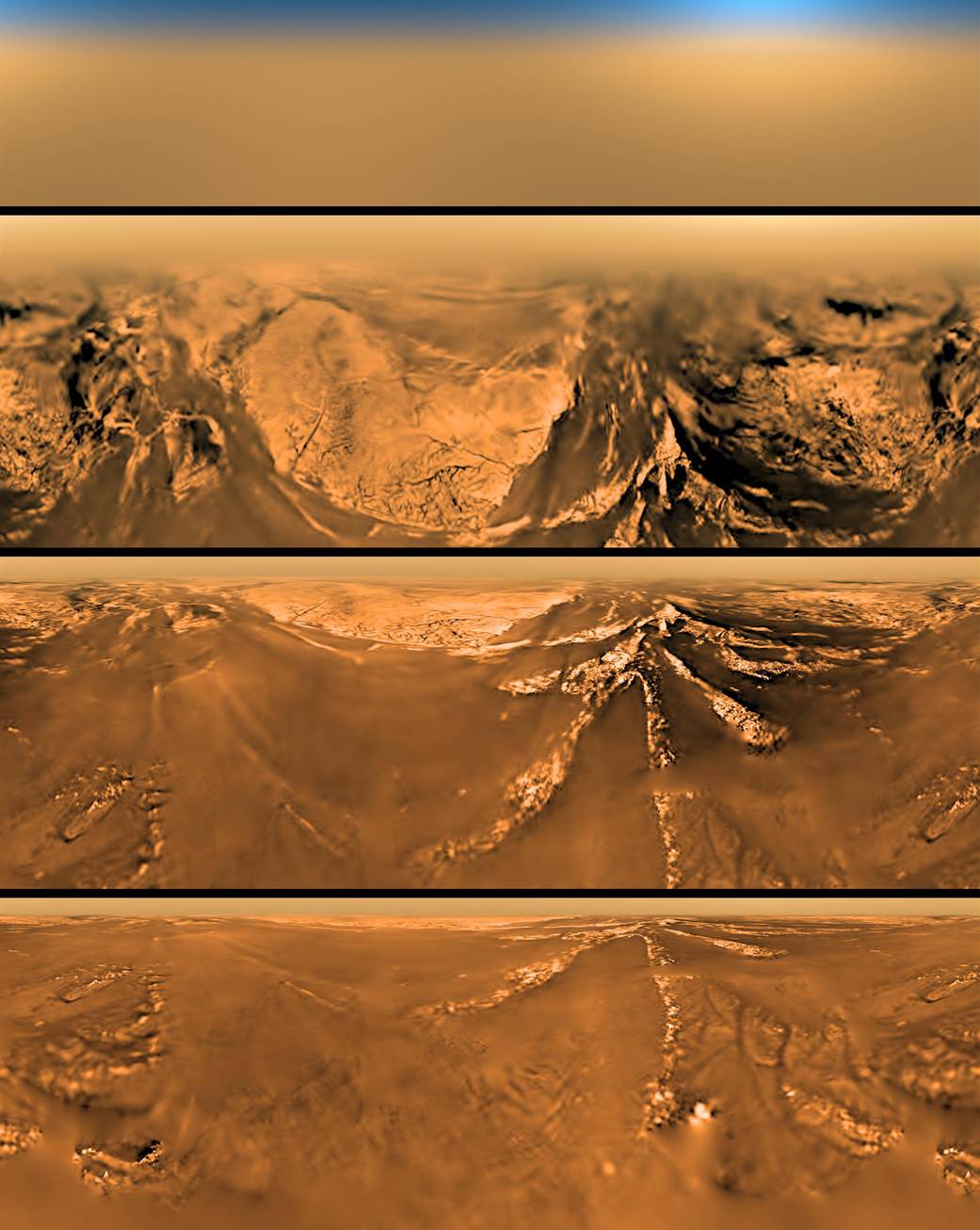
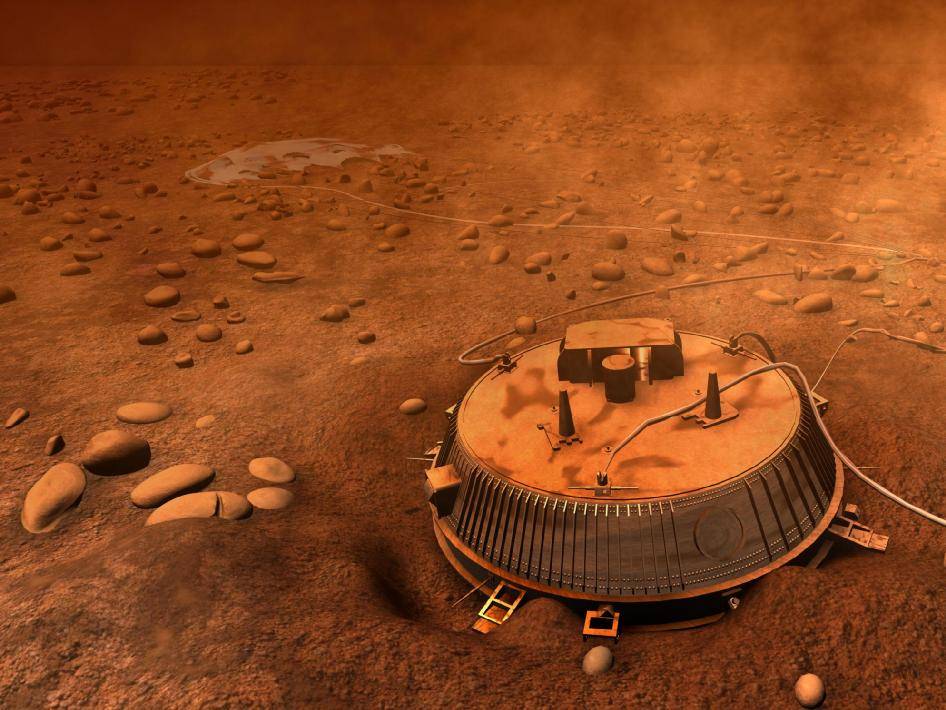
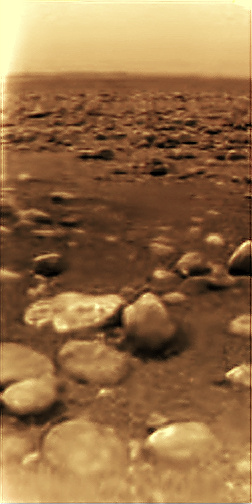
Huygens and Shield
Cassini with Huygens
Huygens Descent
Descent To Titan
Huygens probe
River Bed Gravel



